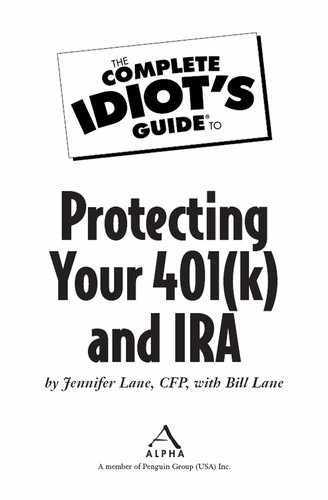Keeping It Organized
Setting up online access to your financial accounts is a great way to stay organized and keep track of a multitude of details and accounts. When you first access your accounts on the web, they may be listed under pretty mundane names—for example, 401(k), company savings plan, Traditional IRA, or even just IRA. Many sites will let you nickname your accounts by adding to or replacing their default names completely. This is a great way to get organized, especially if you want to earmark an account for a special purpose, such as vacation fund or early retirement fund. You can also use nicknames to keep track of important features of the account, such as whether an IRA has any after-tax contributions in it. By naming the account “Nondeductible IRA,” you’ll remember you made contributions that were not deductible on your tax return that year because they were made after-tax.

Nest Eggs
Keeping IRA accounts that have pre-tax contributions—contributions that you took a deduction for on your tax return—separate from IRAs with after-tax contributions will help keep track of how much of the withdrawal you’ll owe tax on. Don’t forget to also file form 8606 in each tax year that you make nondeductible contributions.
Many brokerage websites will let you see the accounts of other people who have given you permission to access their information, including elder parents whose finances you might be managing or monitoring. If you’re overseeing the accounts for your household, having your spouse give you access will allow you to see both his and your own accounts on one web page. For instance, Fidelity Investments calls this feature inquiry access on its site. If the site also has asset allocation tools like Fidelity’s has, having the household’s accounts on one page will allow you to easily check the asset allocation of all accounts combined.
Managing the proliferation of accounts that can accumulate is important. Consolidating your retirement accounts into as few separate accounts as possible will help you keep this part of your finances organized. Combine previous employer plans into an IRA account or your current employer plan. Rolling your SEP or SIMPLE plan into an IRA if you’re no longer self-employed or working for the employer who offered the plan will minimize the accounts you have to keep track of. Using a brokerage firm instead of multiple banks or mutual fund accounts will reduce the number of accounts you have to track. With a brokerage account, you won’t need a new retirement account for each individual investment you own.

Nest Eggs
Many mutual funds and brokerage firms waive their annual fee for accounts that meet minimum balances. Combining accounts using one brokerage firm not only helps organize but also helps reduce the fees you pay.
Online account aggregators like www.Yodlee.com will help keep track of your accounts even if they are at separate financial institutions. After you’ve linked your accounts to the aggregator and entered the online user name and password for each account, the aggregator copies the information from the individual financial sites and presents it as a list of accounts on a single web page. No more clicking around a handful of browser windows trying to make sense of scattered account information, not to mention a flurry of user names and passwords. Many brokerage firms and banks use aggregators like Yodlee to provide similar services on their own websites.
Account aggregators are free online services that help you organize your accounts and track your expenses. They make finding the “don’t really need” parts of your budget easy and will give you pie charts to help analyze your spending patterns. Be sure to read the security information on the site, and never access your financial information from an unsecured Internet connection.
Most financial account websites make statements for the last couple of years available online. But don’t rely only on the site to keep your archive; always keep a separate copy of each regular monthly or quarterly statement and then a copy of the year-end statement for each of your retirement accounts. If the year-end statement shows the activity for the year, including deposits and withdrawals, you can discard or delete the periodic statements and just keep the final year-end tally.

Nest Eggs
Many brokerage firms offer a way to consolidate the account statements of everyone in the household into one combined paper statement. Check the customer service link on their website to see if your broker offers this “account householding.”
If you prefer to keep paper statements as a backup to your electronic files, store the statements with your tax returns or in a separate notebook organized by account. Be sure you have a record of your contributions and withdrawals and especially any after-tax contributions you made to your IRA or employer’s retirement plan. These nondeductible contributions establish what’s known as a “basis” in your account—the initial price you paid for an investment before it has grown in value in your portfolio. When you make withdrawals, you’re entitled to take out as much as the basis without paying additional tax. If you lose track of these special contributions, you could ultimately pay too much income tax in retirement.
..................Content has been hidden....................
You can't read the all page of ebook, please click here login for view all page.
